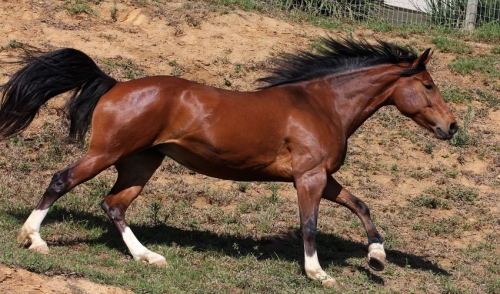
What You Should Know For Getting Your Horse Shod for Fall/Winter
Riding outdoors in the winter demands a special type of shoe that prevents your horse from serious injury.
It is generally accepted that finding the right horseshoe is extremely important for riding in temperate climates in the winter. Riding outdoors in the winter demands a special type of shoe that prevents your horse from serious injury. A variety of different factors must be taken into account when getting your horse shod for winter. First and foremost consider the natural shape of your horse’s hooves, and the type of terrain on the riding property. Keep in mind the horse’s winter riding experience and whether an injury or coordination issue exists.
If your horse’s bare hooves are naturally balanced, then you should not have much trouble finding winter footings that do not cause damage. A naturally balanced hoof will have a dense horn and a nicely concaved soul. These types of hooves ensure that mud, slush, ice, and snow will be easily shed from your horse. This is an ideal situation, however, and owners often have to deal with underlying hoof issues that require special attention. Horse experts have noted that hooves with flat feet, low heels, or long toes have poor traction, which can lead to dangerous consequences for winter riding. Hoof issues of this nature also may lead to substantial bruising on frozen or rigid winter terrain. Climatic variables such as snow thickness and air temperature will dictate the level of safe traction and prevention of snow and mud collection in the hoof. Experts unequivocally agree that getting your horse shod for winter riding is of upmost importance in preventing snow and mud caking, as well as maintaining balance and traction.
Aluminum rim shoes are recommended for optimal traction and maneuvering on difficult winter terrain. Definitely avoid rubber or plastic shoes, which are widely known to provide even less traction than bare hooves. Hardened nails or regular horseshoe nails can be applied at the bottom of shoes
when superior traction is necessary on hard snow or ice. No more than two nails should be lodged per hoof. Moreover, snow-caking or snowballing may occur when snow, mud, manure and other material collect in the hoof and hardens, causing extreme harm to the horse. Snow or moisture that repeatedly collects and freezes in the gap between the hoof and the shoe can result in severe injuries to your horse. This uneven distribution of weight on each hoof can cause coordination issues resulting from muscle, tendon, and ligament fatigue. Winter riders recommend grease spray to the sole as a short-term solution for snow-caking. As for a successful long-term solution, keep in mind that tube-type rim pads, which leave the sole open, are the prime anti-snow caking option when getting your horse shod for winter. In conclusion, keep in mind that installation of anti-snow and mud caking apparatuses in combination with your horses regular shoes will likely establish proper traction if you are considering riding this winter.
